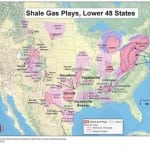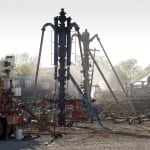The Marcellus shale formation—the second-largest natural-gas field in the world—has been a blessing for Pennsylvania’s workers and our economy.
Almost a quarter-million people in Pennsylvania work to produce natural gas from the Marcellus shale or in related industries. Thanks to the growth of hydraulic fracturing, commonly known as fracking, the Marcellus has been responsible for more than 150,000 new hires in the past three years—almost three-quarters of them state residents. The average salary in core fracking industries is more than $90,000 a year. In 2010 alone, oil and gas development utilizing fracking contributed more than $11 billion to Pennsylvania’s economy.
The key to this economic success story has been the welcoming regulatory environment our policymakers and legislators have created. They are keeping Pennsylvanians safe while encouraging investment. As some neighboring states begin to catch on, lawmakers need to remain vigilant about making sure Pennsylvania has the smart policies we need to keep the investment dollars flowing.
Williamsport has been the center of our natural-gas boom, with an economic growth rate of 7.8%. Even Pennsylvanians not directly involved in fracking benefit through lower energy costs. Between 2008 and 2011, the largest natural-gas utilities in the region averaged rate cuts of more than 40%, resulting in savings of $3,200 per customer.
As government revenues have fallen because of the economic downturn, oil and gas development utilizing fracking has been critical to state and local budgets, producing revenues that help pay for teachers, police officers, and other public employees. Statewide, average sales-tax collections between 2007 and 2010 fell by 3.8% overall—but they were up 11.4% in counties that had drilled 150 or more Marcellus Shale wells.
Fracking is safe and environmentally friendly. In Pennsylvania, more than a dozen state and federal regulatory agencies oversee all aspects of fracking, from well development to pipeline construction. Properly constructed wells leave a very small environmental imprint, and about 99.5% of the solution used to free natural gas from shale formations is just water and sand.
The Marcellus Shale has the potential to provide a quarter of America’s natural gas by 2020, driving down energy costs and creating and sustaining tens of thousands of jobs. The energy sector is moving in to fill the void left by manufacturing in the commonwealth. Between 1990 and 2009, manufacturing employment in Pennsylvania fell by 40% and is now just 10% of our state’s economy.
Pennsylvania leads the country in developing safe, effective fracking technologies and policies—and other states are starting to follow suit. Ohio, North Carolina, and New York are looking to expand oil and gas development. North Carolina is debating fracking regulations, and Ohio has permitted and developed dozens of Utica wells. New York Gov. Andrew Cuomo has seen the benefits of oil and gas development in other states, and is showing signs of moving toward approval.
Pennsylvania should be proud to have led the way, but can’t rest on its laurels. It needs to stay competitive. The United States may have as much as a century’s worth of natural gas under its feet, and developing that energy should be a big part of our economic future.
—Kevin Colosimo serves as a managing partner at Burleson LLP in Pittsburgh, and is a trustee at large for the Energy and Mineral Law Foundation in Kentucky. This article originally appeared in Philly.com, the Philadelphia Inquirer website and is reprinted here by permission with minor style edits for this publication.










